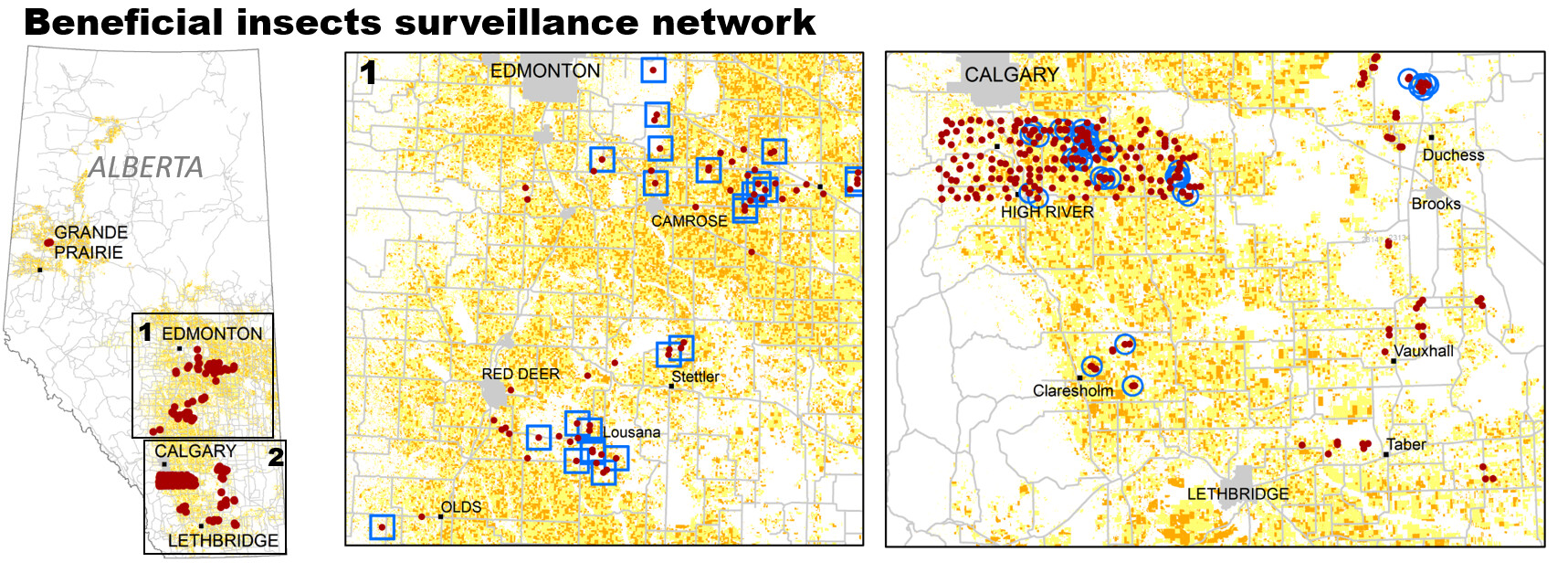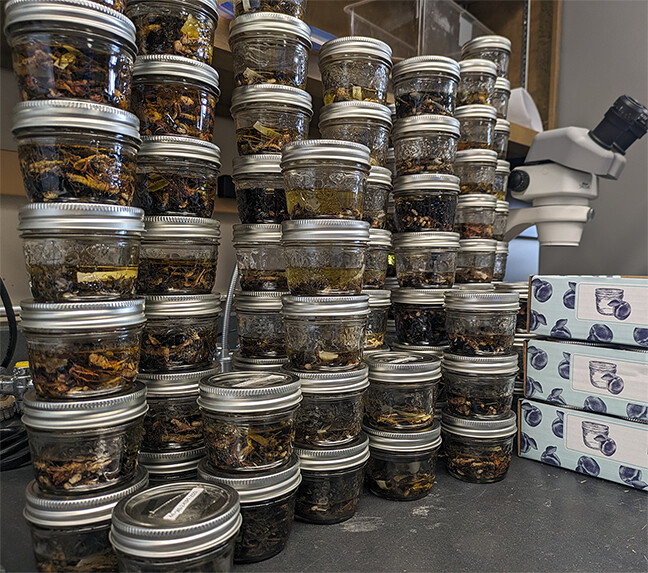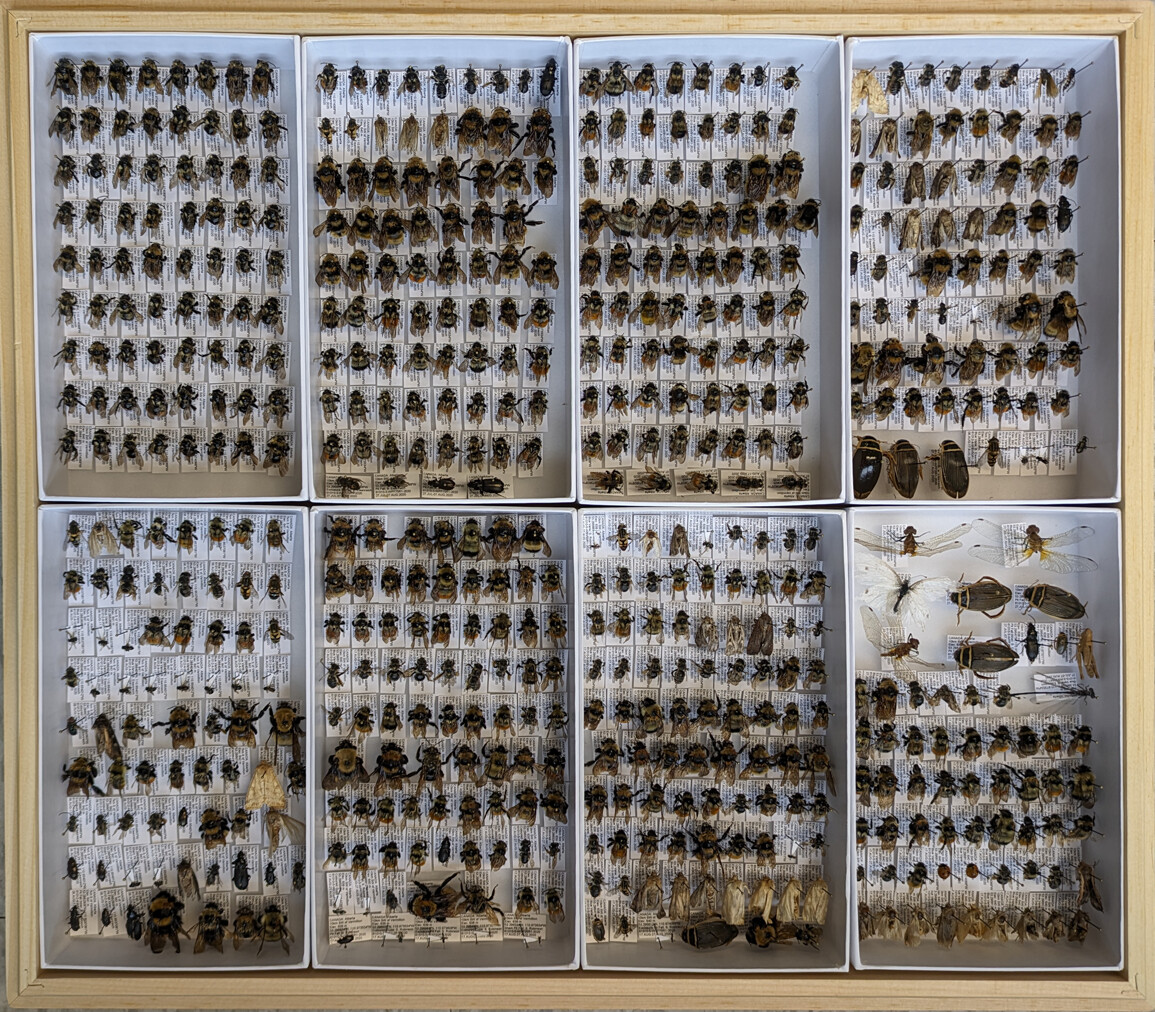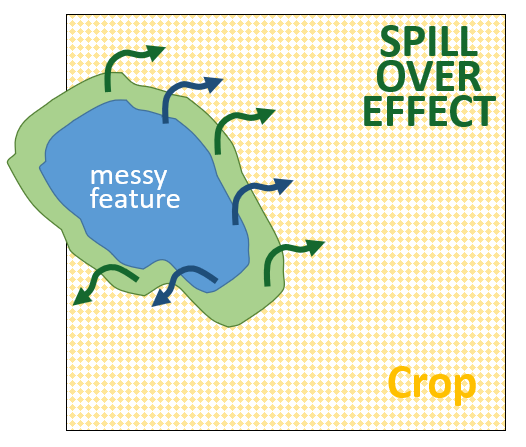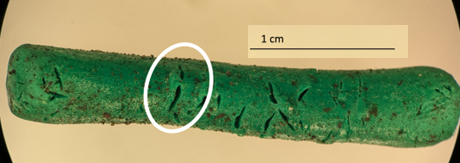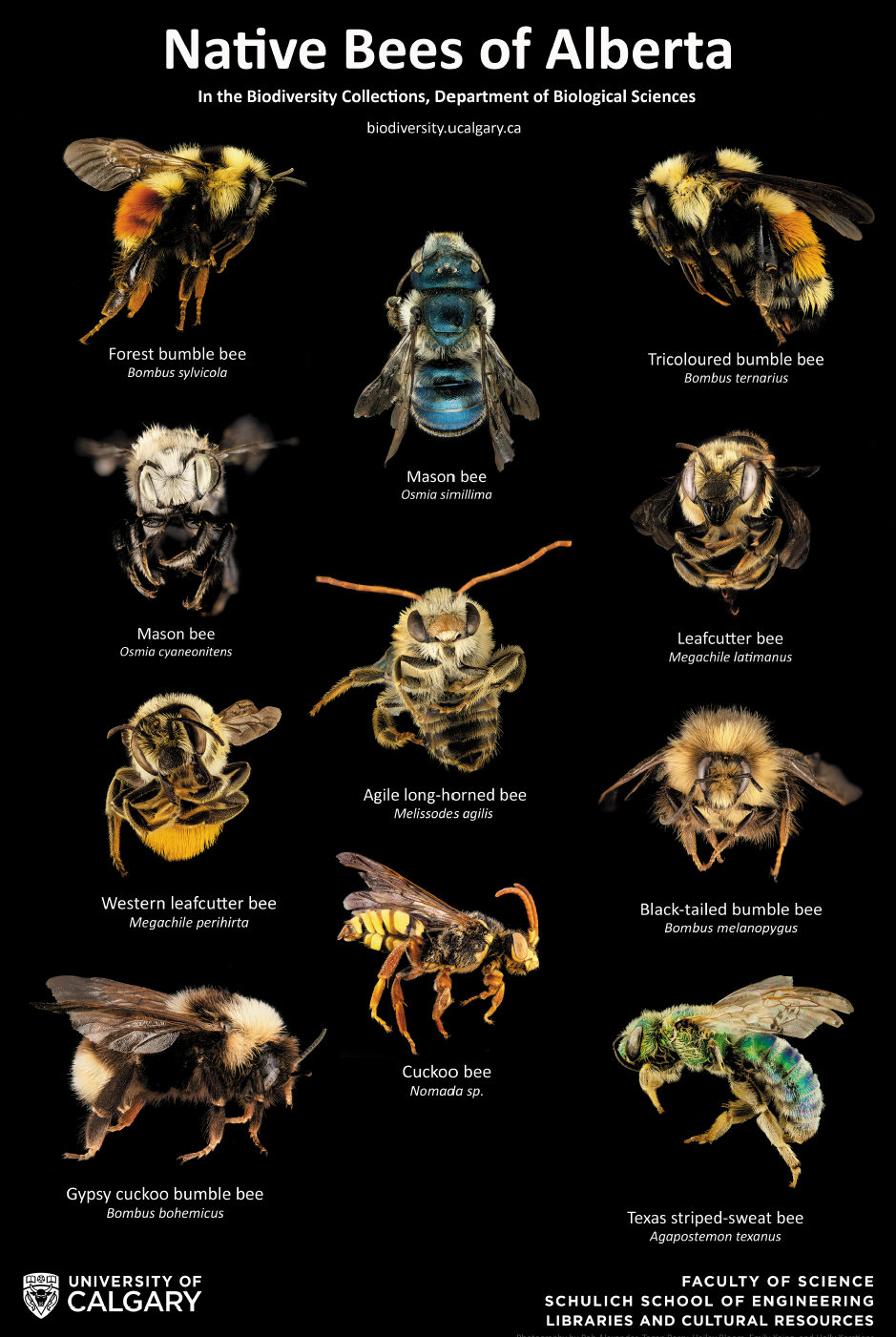Biodiversity
Monitoring and surveillance
We love insects! (See Figure 1). So little is known about so many species. Our lab is working hard to change this, close to home, in Alberta and British Columbia, Canada.
A major focus are the beneficial insects that provide ecosystem services. Our team has sampled at hundreds of sites (Figure 2). Back at the lab, sample processing (like this; Figure 3), followed by pinning specimens (like this; Figure 4) is a common activity for our undergraduate and graduate students.
Biodiversity data are the basis of many recent lab publications. For example:
Postdoc Dr. Abigail Cohen reported that wetlands found in the Canadian Prairies (known as “sloughs”) are important for several bumble bee species, particularly when wildflowers growing in their margins come into bloom [1].
Another of Abigail’s forthcoming papers will explore risks to bees and beetles in the region under changing climate conditions.
Master’s student Emily Purvis investigated the reassembly of bee communities following restoration of grassland-wetland complexes [2] and which wildflowers support the greatest bee diversity [3].
PhD student, Dr. Danielle Clake, took our monitoring work to the Rockies and adjacent Selkirk Mountains, climbing 17 mountains three times each. One outcome of that effort was the identification of a new cryptic species of bumble bee using genomic methods. Danielle named the new species Bombus hibernus [4].
Arthropod ecosystem services
Lab personnel have shown that non-crop vegetation near fields provides habitat for pollinators and for the natural enemies of crop pests. Spillover (Figure 5) of these arthropods has been a popular research topic for us. Some examples of our spillover research:
In a well-cited 2019 study, postdoc Dr. Jess Vickruck showed that native bees are more abundant closer to wetland margins [5], where they spillover (Figure 5) into crops. There they can supply pollination services to flowering crops, such as canola and alfalfa.
Dr. Sam Robinson, also a postdoc, discovered that beetles and other predatory arthropods move into and out of these habitats across the growing season, bringing them closer to where their service is needed [6].
MSc student Tobyn Neame showed that predation frequency (as measured by sentinel prey caterpillars; Figure 6) is higher closer to non-crop vegetation [7], and that larger beetles are found further away from field edges [8], suggesting that the body size functional trait influences the spillover distance.
BSc (Hons) student Rebecca Innes found that canola pests, at least late in the season, do not spillover from non-crop features [9], which has sometimes concerned farmers.
What next? Weed control! Many beetles are seed-eaters, and this ecosystem service may be mediated by proximity to non-crop vegetation. PhD student Tianyi Ren is working hard on this one.
Can we predict arthropod ecosystem services better using functional traits? For example, like morphology or behaviour, that are not taxa-specific. Answering this second question is essential for generalizing beyond the region to gain global understanding of the mechanisms connecting biodiversity and ecosystem services.
Education and community outreach
We partnered with the library at the University of Calgary, in 2019, to create a digital image database of the bee diversity of Alberta. For this we drew on our lab’s bee collection, and high resolution photographic tools. The database contains more than 1000 images of bees and other arthropods, imaged by students in the lab or in entomology courses.
We even made a poster of some of Alberta’s most colourful native bee species (Figure 7). If you would like to print your own large-format poster, please download the high resolution PDF here.
Our outreach is ongoing. Trainees in the lab have visited schools in the city, and some of us participate on City of Calgary biodiversity committees.
Funders
We thank the following funders for their support of our biodiversity research, since 2015 (in alphabetical order):
- Alberta Biodiversity Monitoring Institute
- Alberta Conservation Association
- Canadian Wildlife Service
- Ducks Unlimited Canada
- Mitacs
- Mellon Foundation / Libraries and Cultural Resources, University of Calgary
- North American Waterfowl Management Plan (AB)
- NSERC
Selected publications from the lab
See more of our biodiversity research publications here.
Keywords
arthropods; bees; beetles; biodiversity monitoring; ecosystem services; functional traits; pest regulation; pollination; spillover, urban biodiversity; weed control;

